So I want to generate a chart graph from a csv data file, and I've been following a guide but I can't seem to manipulate my code in such a way to get what I want.
So here is what I have so far:
from pandas import DataFrame, read_csv
import matplotlib.pyplot as plt
import pandas as pd
import sys
import matplotlib
df = pd.read_csv("TB_burden_countries_2018-03-06.csv")
df = df.set_index(['country'])
df2 = df.loc["Zimbabwe", "e_mort_num"]
df2 = df.loc["Zimbabwe", "e_mort_num"]
df = pd.DataFrame(data = df2, columns= ["e_mort_num"])
df.columns = ["Mortality"]
print(df2)
This code was just so I can choose a specific country (Zimbabwe) and look at its population number (e_mort_num). What could I write to generate a chart graph? I've been using this tutorial : http://pbpython.com/simple-graphing-pandas.html, but I'm having trouble manipulating variable names, a I'm not too sure what I should be doing. If you require more information, please say so. Thank you for your help!
CSV bit of interest:
Country Year Mortality
Zimbabwe 2000 20000
Zimbabwe 2001 18000
Zimbabwe 2002 17000
Zimbabwe 2003 19000
Zimbabwe 2004 19000
Zimbabwe 2005 22000
Zimbabwe 2006 24000
Zimbabwe 2007 24000
Zimbabwe 2008 23000
Zimbabwe 2009 17000
Zimbabwe 2010 13000
Zimbabwe 2011 14000
Zimbabwe 2012 14000
Zimbabwe 2013 11000
Zimbabwe 2014 11000
Zimbabwe 2015 9000
Zimbabwe 2016 5600
